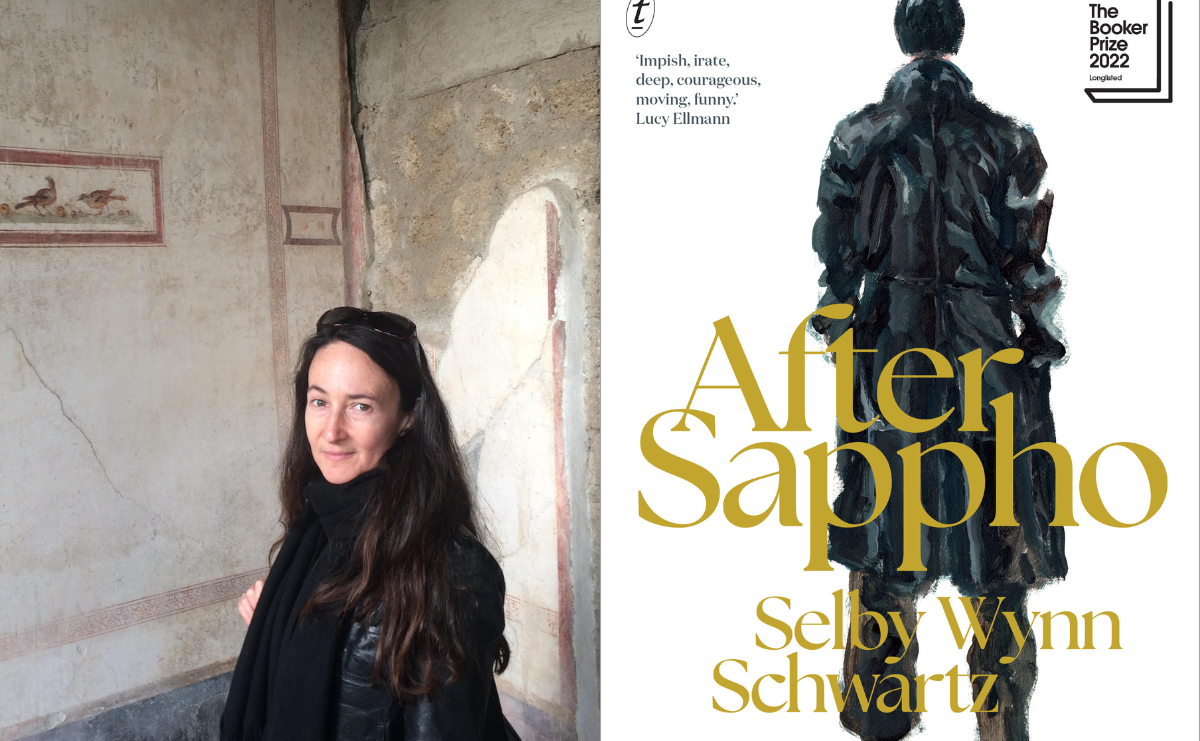After Sappho, by Selby Wynn Schwartz is an imaginative new fiction based on true historical details that documents the inner worlds of feminist artists from different walks of life, and revolving around an Italian poet, Lina Poletti in 1880s Italy. Poletti is often said to be one of the first openly queer femmes in Europe, dressing in men’s attire and fiercely prepossessed.
‘She seemed volatile, alchemical. Something might flash through her and change everything. As Sibilla Aleramo would say to us later, Lina was a violent, luminous wave.’ Schwartz writes.
The poetic focus of Schwartz’ prose strikes the reader at points like this, drawing lineages between the spirited femme artists with golden imagery. The book is dripping with allusions to sparks of inspiration as the writers’ narratives radiate into each other’s auras. The sub narratives of each artists are fascinating and luminously depicted.
The stories span time and geography, as the book moves from 1880s Italy, to 1920s Paris and London, pulling dancer Isadora Duncan and actor Sarah Bernhardt into its orbit, then onto Radclyffe Hall and Gertrude Stein. Schwartz invokes what she terms ‘kletic time’ for these interwoven narratives, something she says a poet is ‘always living in’. Kletic poems, a signature of Greek writer Sappho (c. 630 – c. 570 BC), invoke a deity or godlike figure to come to the rescue and succour of the speaker of the poem.
On this theme, Schwartz writes, all these inspired women are ‘calling out… waiting’. For what, we wonder. For a longed-for ‘forbidden’ love, the kind explored in many of Sappho’s translations, longing for lovers stolen away from her, ‘into the bridal chamber’ or ‘…like the hyacinth in the mountains that shepherd men/with their feet trample down’? Either way, there is a latent violence in both Sappho’s oeuvre and in Schwartz’ exegesis against the desiring femme, something that must be expressively fought against, through poetry and loving.
Read: Book review: Red, Felicity McLean
The femmes of the book, especially the narrator, are remembered by Schwartz in an original way. Schwartz refers to this act of remembrance through their half-speculative life stories as a tension, between the past, and the future they are paving for others, who might identify as femme artists:
‘She lies down in the shade of the future and drowses among its roots. Her case is the genitive of remembering’ and ‘…we wanted stories set about us like gleaming surfaces, reflecting and burnishing our hopes.’
The tension between past and future is further explored as Schwartz unearths stories of femme artistry and love in the ‘golden era’ of 1920s-30s. This is a book deeply nestled in the forbidden yet abundantly visible bohemian queerness of the age, infused with sapphism but not necessarily the sex positivity and acceptance of the current era.
The difficulty of course with comparing between eras, geography and generations however, is the deficit of lived experience. It is less fraught perhaps for a queer novel to inhabit older worlds and different places, especially in the vein of speculative non-fiction than to try to speak for a cohesive present movement or universality for all times.
The absolute strength of this book is the beautiful lyricism of the prose, reminiscent of the beautiful and oft-quoted letter exchanges between Virginia Woolf and Vita Sackville-West. One such example are the lines in a letter from Sackville-West to Woolf:
‘I composed a beautiful letter to you in the sleepless nightmare hours of the night, and it has all gone: I just miss you, in a quite simple desperate human way.’
And so, Schwartz encapsulates a beautiful, longing poesis in the lines like these:
‘A poet is someone who swims inexplicably away from the shore, only to arrive at an island of her own invention.’
After Sappho, Selby Wynn Schwartz
Publisher: Text Publishing
ISBN: 9781922458612
Pages: 288 pp
Release Date: 19 July 2022
RRP: $29.99





